Tennessee boasts a rich tapestry of birdlife, and within its forests and woodlands, eight distinct species of woodpeckers drum out a unique rhythm.
These avian percussionists contribute to the state’s vibrant ecosystems with their diverse sizes, colors, and habitats.
Each species plays a crucial role in the delicate balance of Tennessee’s natural environment, from the iconic Pileated Woodpecker from its striking red crest to the diminutive Downy Woodpecker.
The resonant taps of the Red-bellied Woodpecker and the melodic calls of the Northern Flicker echo through the state’s diverse landscapes.
Woodpeckers, including the Yellow-bellied Sapsucker and the Hairy Woodpecker, bring both visual and auditory delights to birdwatchers, making Tennessee a haven for those seeking the intricate beauty of these skilled and adaptable feathered percussionists.
7 Woodpeckers In Tennessee
Tennessee’s woodlands resonate with the drumming beats of eight distinct woodpecker species. These avian artists contribute to the state’s natural symphony, from the vibrant Pileated Woodpecker to the petite Downy Woodpecker.
Each woodpecker, with its unique characteristics, enhances the allure of Tennessee’s diverse and thriving birdlife.
1. Pileated Woodpecker
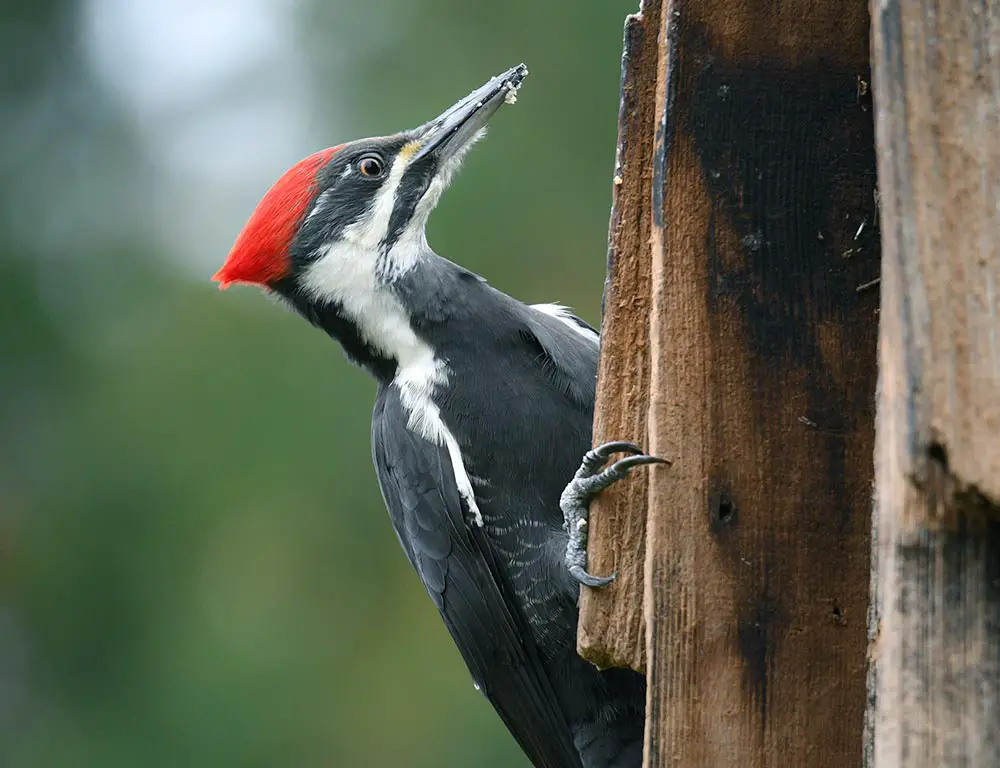
- Scientific name: Dryocopus pileatus
- Category: Large woodpecker
- Population: Stable, common throughout eastern North America
- Life span: Up to 12 years in the wild
- Size: 16 to 19 inches
- Weight: 8 to 12 ounces
- Food: Insects, especially carpenter ants, and fruits
- Wingspan: 26 to 30 inches
- Status: Not globally threatened; considered a species of least concern
With its striking appearance, the Pileated Woodpecker is a charismatic inhabitant of Tennessee’s woodlands. Known for its distinctive loud drumming and vibrant red crest, these large woodpeckers are skilled foragers.
Their strong bills are adept at extracting carpenter ants from tree bark. Pileated Woodpeckers carve large rectangular holes in trees, creating homes for themselves and providing shelter for other species.
They are often observed in mature forests, making them a key indicator of forest health. With their unique vocalizations and distinctive appearance, Pileated Woodpeckers contribute to the rich biodiversity of Tennessee’s ecosystems.
2. Downy Woodpecker
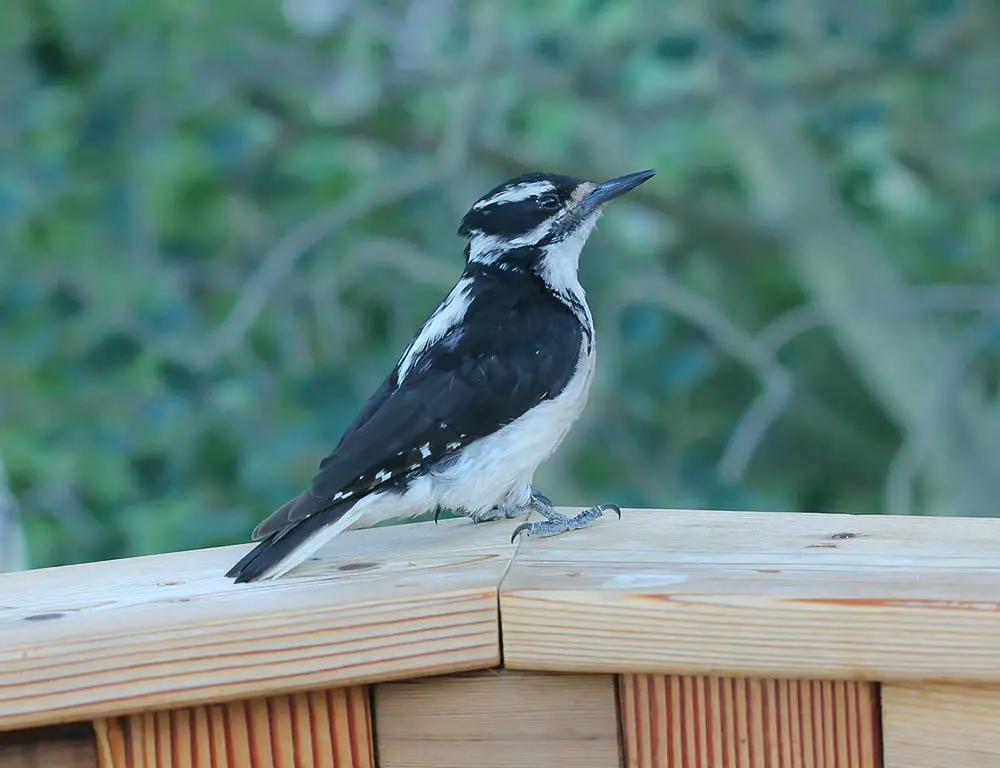
- Scientific name: Dryobates pubescens
- Category: Small woodpecker
- Population: Common and widespread in North America
- Life span: Up to 6 years in the wild
- Size: 5.5 to 7 inches
- Weight: 0.7 to 1 ounce
- Food: Insects, seeds, and berries
- Wingspan: 9 to 12 inches
- Status: Not globally threatened; considered a species of least concern
The Downy Woodpecker, the smallest woodpecker in North America, is a frequent visitor to Tennessee’s wooded areas.
Recognizable by their black and white plumage and small size, they are often found exploring tree bark in search of insects and larvae.
Downy Woodpeckers are acrobatic climbers, using their specialized bills to extract prey from crevices in the bark. Their adaptability to various habitats, including urban areas and parks, makes them a familiar sight for birdwatchers.
With a gentle tapping sound and a preference for small branches, these woodpeckers contribute to the natural symphony of Tennessee’s woodlands.
3. Yellow-bellied Sapsucker
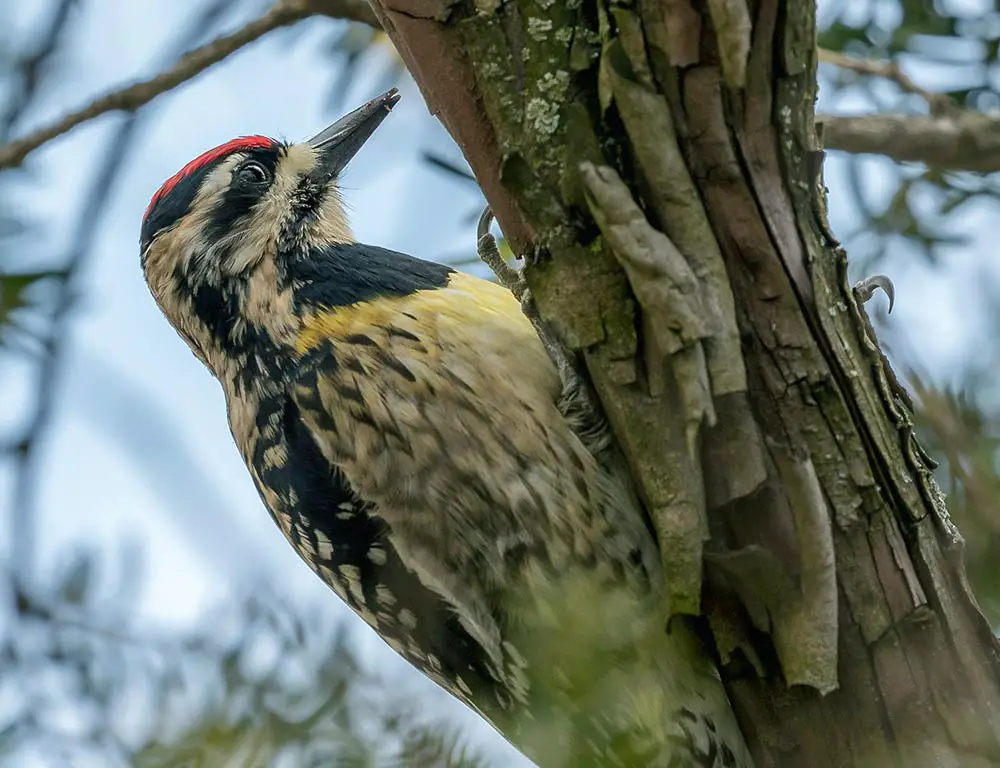
- Scientific name: Sphyrapicus varius
- Category: Medium-sized woodpecker
- Population: Varies, but generally stable across its range
- Life span: Up to 9 years in the wild
- Size: 7 to 8.5 inches
- Weight: 1.5 to 2 ounces
- Food: Sap, insects, and tree fruits
- Wingspan: 13 to 16 inches
- Status: Not globally threatened; considered a species of least concern
With its unique feeding habits, the Yellow-bellied Sapsucker is a migratory visitor to Tennessee. These woodpeckers drill distinct rows of sap wells in trees and consume the sap; insects attracted to it, and tree fruits.
They create a characteristic pattern of small holes on tree trunks. Yellow-bellied Sapsuckers are often associated with coniferous and deciduous forests.
During the breeding season, they add insects to their diet to meet the energy demands of raising young. Their vibrant plumage and the rhythmic tapping sounds of their drilling make them intriguing additions to Tennessee’s woodlands.
4. Red-headed Woodpecker
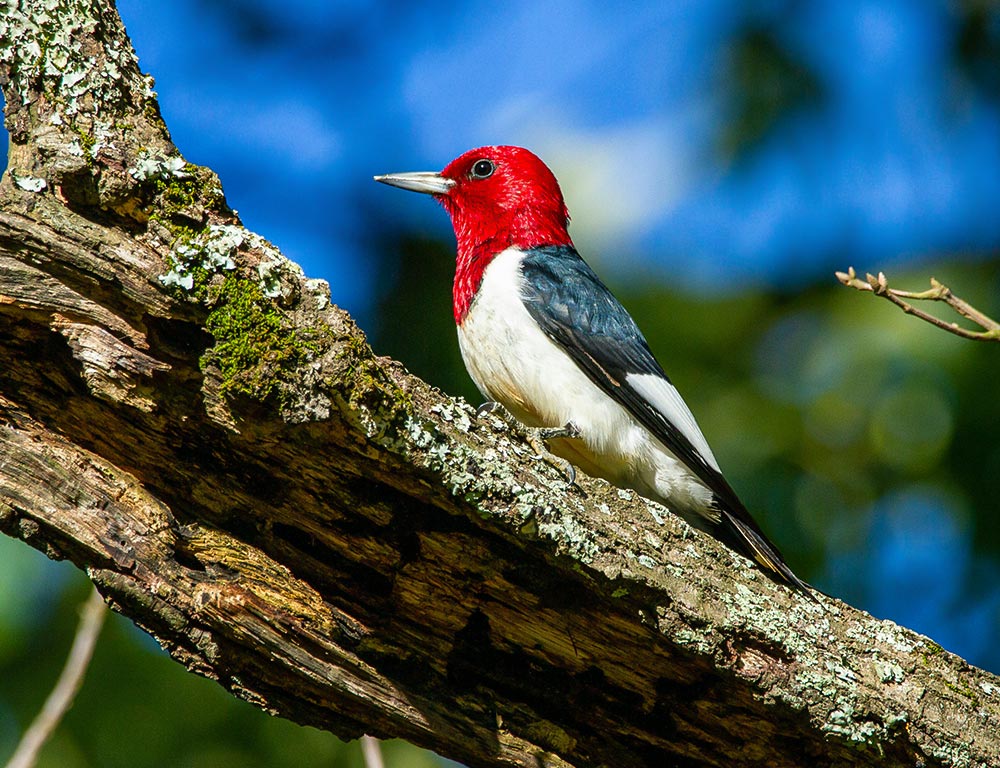
- Scientific name: Melanerpes erythrocephalus
- Category: Medium-sized woodpecker
- Population: Declining in parts of its range, conservation concern
- Life span: Up to 9 years in the wild
- Size: 7.5 to 9.25 inches
- Weight: 2.2 to 3.4 ounces
- Food: Insects, nuts, seeds, and occasionally small vertebrates
- Wingspan: 16 to 17 inches
- Status: Near Threatened due to population decline
With its vibrant plumage, the Red-headed Woodpecker is a species of concern in Tennessee due to population declines.
Recognizable by their striking red heads, white bodies, and black wings, these woodpeckers are skilled catchers of flying insects and proficient foragers of nuts and seeds.
Their habit of storing surplus food in crevices or tree bark contributes to the forest ecosystem’s dynamics.
Red-headed Woodpeckers are known for their flight agility and drumming sounds during courtship displays. Conservation efforts are crucial to preserve these charismatic woodpeckers in Tennessee’s diverse landscapes.
5. Red-bellied Woodpecker
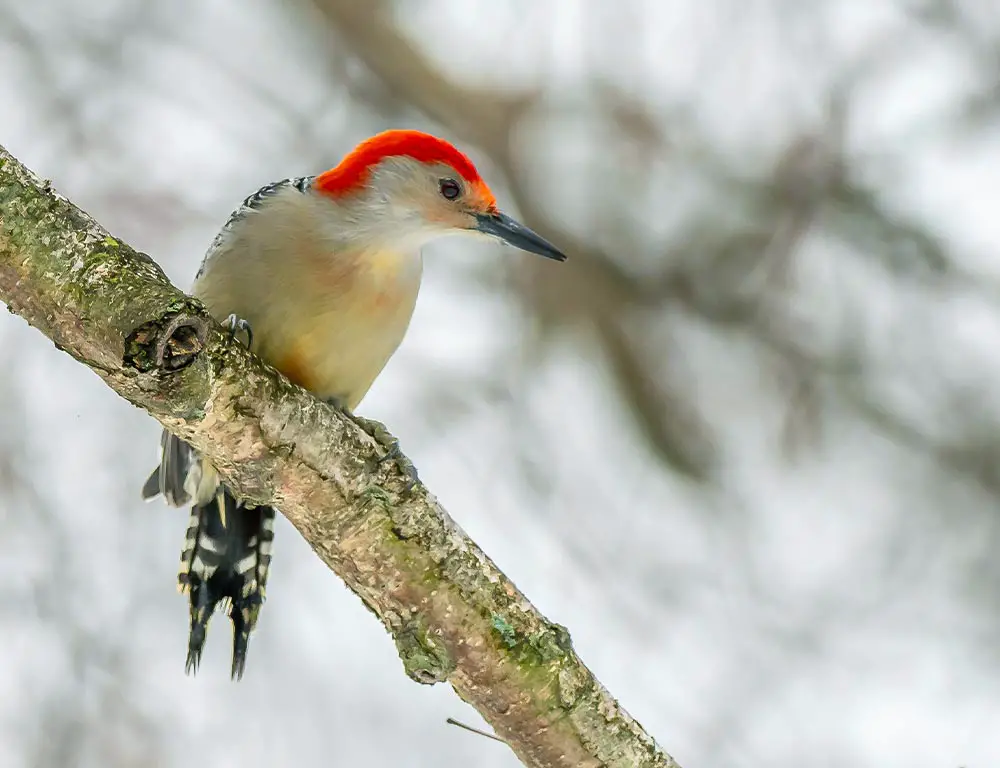
- Scientific name: Melanerpes carolinus
- Category: Medium-sized woodpecker
- Population: Common and widespread in eastern North America
- Life span: Up to 9 years in the wild
- Size: 9 to 10.5 inches
- Weight: 2.0 to 3.2 ounces
- Food: Insects, fruits, seeds, and occasionally small vertebrates
- Wingspan: 13 to 16 inches
- Status: Not globally threatened; considered a species of least concern
The Red-bellied Woodpecker, named for a faint reddish wash on its belly, is a familiar and adaptable species in Tennessee.
With a striking black-and-white barred back and a red cap extending from its nape to the forehead, they are often spotted in woodlands and suburban areas.
Their omnivorous diet includes insects, fruits, seeds, and small vertebrates. Red-bellied Woodpeckers are known for their distinctive rolling call and drumming sounds.
They exhibit strong territorial behavior, defending their nesting sites and foraging areas. Their adaptability to diverse habitats makes them a common and welcomed presence in Tennessee’s woodlands.
6. Northern Flicker
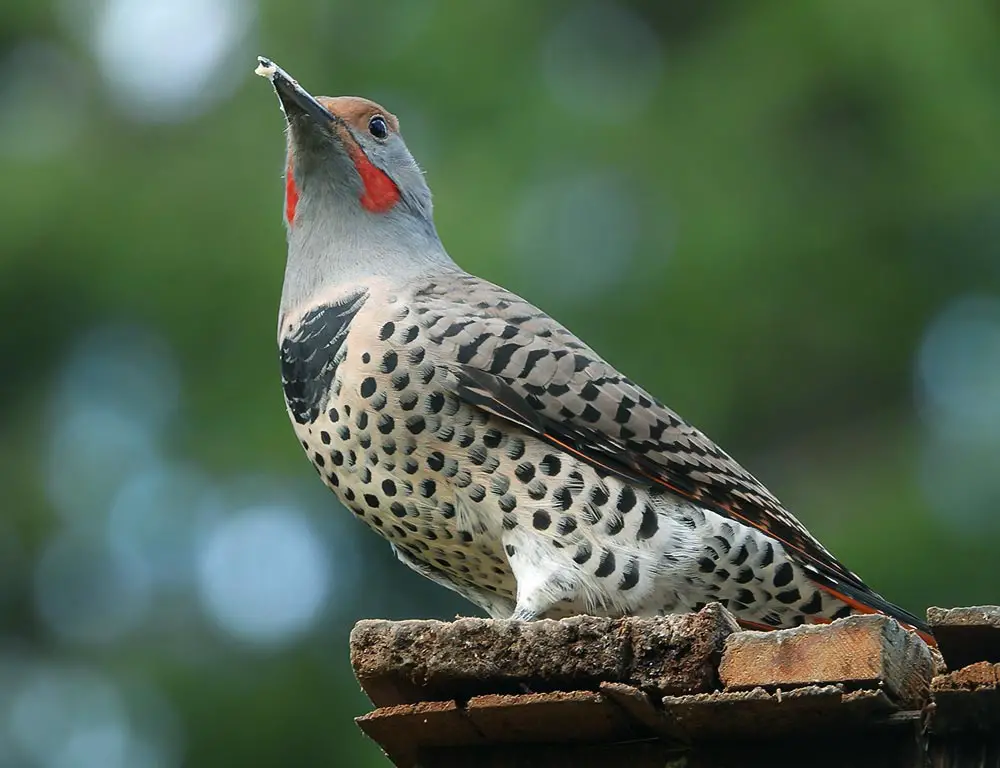
- Scientific name: Colaptes auratus
- Category: Medium to large woodpecker
- Population: Widespread and common across North America
- Life span: Up to 9 years in the wild
- Size: 11 to 14 inches
- Weight: 3 to 5.6 ounces
- Food: Ants, beetles, seeds, fruits, and occasionally small vertebrates
- Wingspan: 17 to 21 inches
- Status: Not globally threatened; considered a species of least concern
The Northern Flicker, a distinctive woodpecker, exhibits a unique mix of ground and tree foraging behaviors. Identified by its spotted or barred plumage, the flicker’s striking yellow underwings are visible in flight.
They have a varied diet, with a preference for ants, beetles, seeds, and fruits. Northern Flickers are known for their drumming sounds and vocalizations, adding to the acoustic tapestry of Tennessee’s woodlands.
Their habit of foraging on the ground for insects and their arboreal activities showcases their adaptability to different ecological niches.
7. Hairy Woodpecker
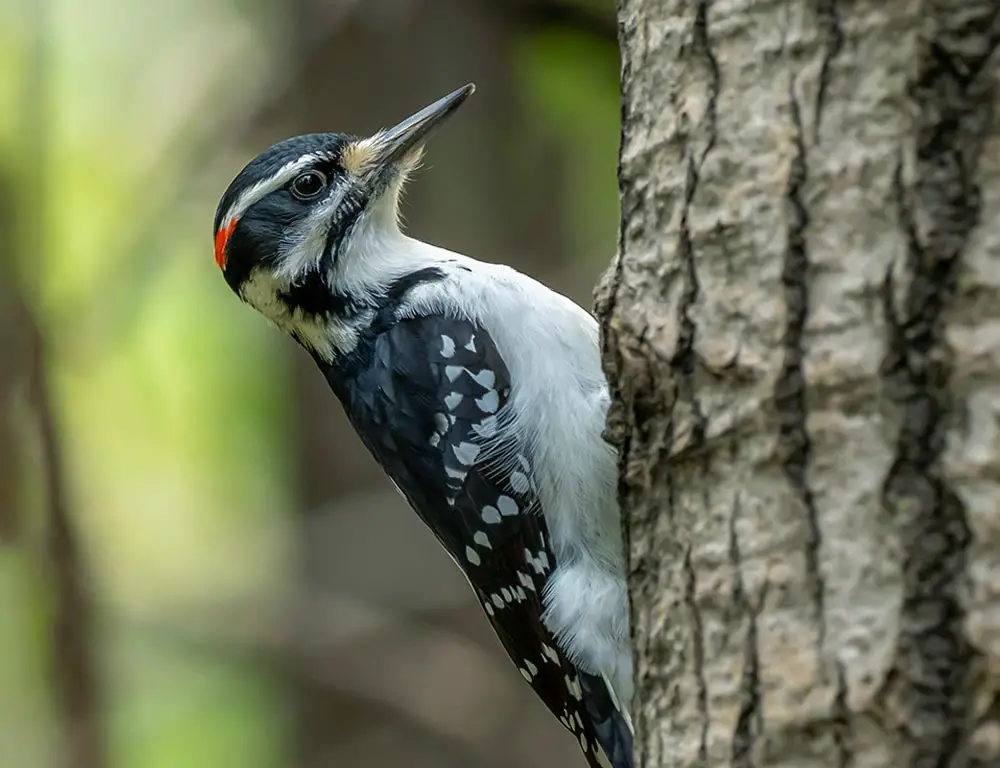
- Scientific name: Leuconotopicus villosus
- Category: Medium-sized woodpecker
- Population: Common and widespread in North America
- Life span: Up to 15 years in the wild
- Size: 7 to 10 inches
- Weight: 1.4 to 3.4 ounces
- Food: Insects, seeds, and occasionally sap
- Wingspan: 13 to 17 inches
- Status: Not globally threatened; considered a species of least concern
The Hairy Woodpecker, a close relative of the Downy Woodpecker, is a common sight in Tennessee’s woodlands. Identified by their larger size and longer bill, they are efficient foragers, probing tree bark for insects and seeds.
Hairy Woodpeckers are adept climbers and can be found in various habitats, including forests and suburban areas. Their rhythmic drumming and sharp calls contribute to the soundscape of the woodlands.
As cavity nesters, they play an essential role in ecosystem dynamics by creating homes that are later used by other species, showcasing their significance in the interconnected web of Tennessee’s natural environments.
Ecological Significance of Woodpeckers In Tennessee
Woodpeckers play a crucial ecological role in Tennessee, contributing to the health and balance of the state’s ecosystems in various ways.
Their significance encompasses both direct and indirect impacts on the environment. Here are several aspects of the ecological importance of woodpeckers in Tennessee:
Insect Population Control
Woodpeckers are adept insect hunters, and a significant portion of their diet consists of wood-boring insects, caterpillars, and other pests.
By controlling insect populations, woodpeckers help regulate the overall health of forests and prevent the spread of harmful tree diseases.
Tree Health Maintenance
Woodpeckers excavate cavities in trees for nesting and roosting. These cavities, once abandoned, serve as vital shelter for various bird species, small mammals, and even other woodpeckers, contributing to the overall biodiversity of the forest.
Forest Ecosystem Dynamics
Woodpeckers play a role in shaping the forest ecosystem by influencing the structure of tree trunks. Their foraging activities create holes and cavities, promoting a diverse range of microhabitats within the forest.
Seed Dispersal
Some woodpeckers, such as the Northern Flicker, consume fruits, berries, and insects.
By dispersing seeds through their feeding habits, woodpeckers contribute to the ecosystem’s regeneration and diversity of plant species.
Indicator Species
Woodpeckers are considered indicator species, reflecting the overall health of the forest ecosystem. Changes in woodpecker populations or behaviors can signal broader ecological imbalances or the presence of disturbances in the environment.
Biodiversity Support
Woodpeckers contribute to the biodiversity of Tennessee’s forests by providing nesting sites for cavity-nesting birds and mammals.
The availability of woodpecker-created cavities attracts a variety of wildlife, enhancing the overall richness of species in the region.
Erosion Prevention
Woodpecker activities, including creating holes and cavities, contribute to the recycling of dead and decaying wood.
This process helps maintain soil quality and prevent erosion by promoting the decomposition of fallen trees and branches.
Cultural and Educational Value
Woodpeckers hold cultural significance and serve as subjects of interest for birdwatchers, researchers, and educators.
Their presence contributes to appreciating nature and fosters a connection between people and the natural world.
Understanding and conserving woodpecker populations in Tennessee is essential for preserving the ecological balance and promoting the overall health of the state’s diverse ecosystems.
Through habitat conservation and sustainable forestry practices, the ecological significance of woodpeckers can be maintained for the benefit of both wildlife and communities.
Wrapping Up
Woodpeckers in Tennessee emerge as unsung heroes, silently orchestrating the intricate symphony of the state’s ecosystems.
From their role in insect population control to the creation of vital nesting sites, these feathered architects play a pivotal role in maintaining the health and biodiversity of Tennessee’s forests.
As indicators of environmental well-being, changes in woodpecker populations underscore the delicate balance within the ecosystem. The cultural, educational, and aesthetic value they bring further accentuates their significance.
To ensure continued ecological harmony, conservation efforts must prioritize the preservation of woodpecker habitats, advocate for sustainable forestry practices, and maintain awareness about their vital role in our natural heritage.